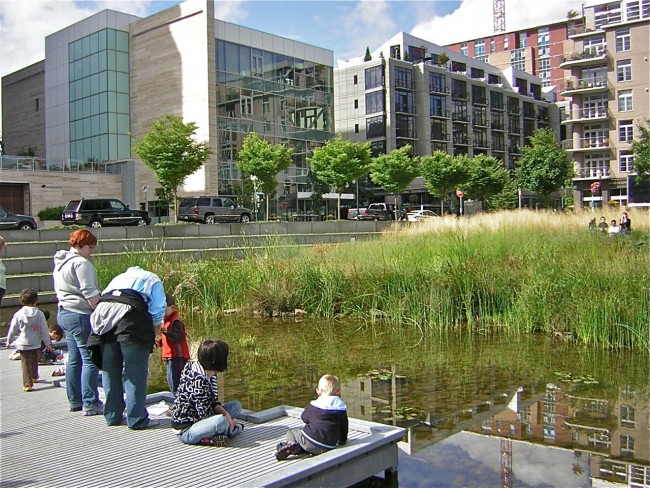As our global population moves into cities, we must continue to progress urban landscape design beyond physical infrastructure and direct costs. As residents and planners, we all have a responsibility to imagine and implement equitable and healthful landscapes. Here is a sample of infrastructure providing multiple, overlapping benefits.
Trees, vegetation, and permeable soils in urban areas absorb or slow down rainfall. Stormwater designs using vegetation (such as bioswells) alleviates pressure from drainage systems and lowers the risk of surface water flooding. Intimate green spaces designed for a moment of contemplation and rest, Open Spaces Sacred Places, can be tucked in to these stormwater sites.
Tanner Springs Park is a water retention site serving a wide watershed area in Portland, Oregon. Water retentions tend to be sunken and gated off areas.
The design team recognized this site as a potential resource for community space and provided a creative, restorative design. The space is accessible right down to the water, and can be used to cross to the other side of the block along a winding boardwalk.
Boardwalk signage provides information on plants and wildlife living in the water; visitors often pause to peer into the waterscape for a closer look.

